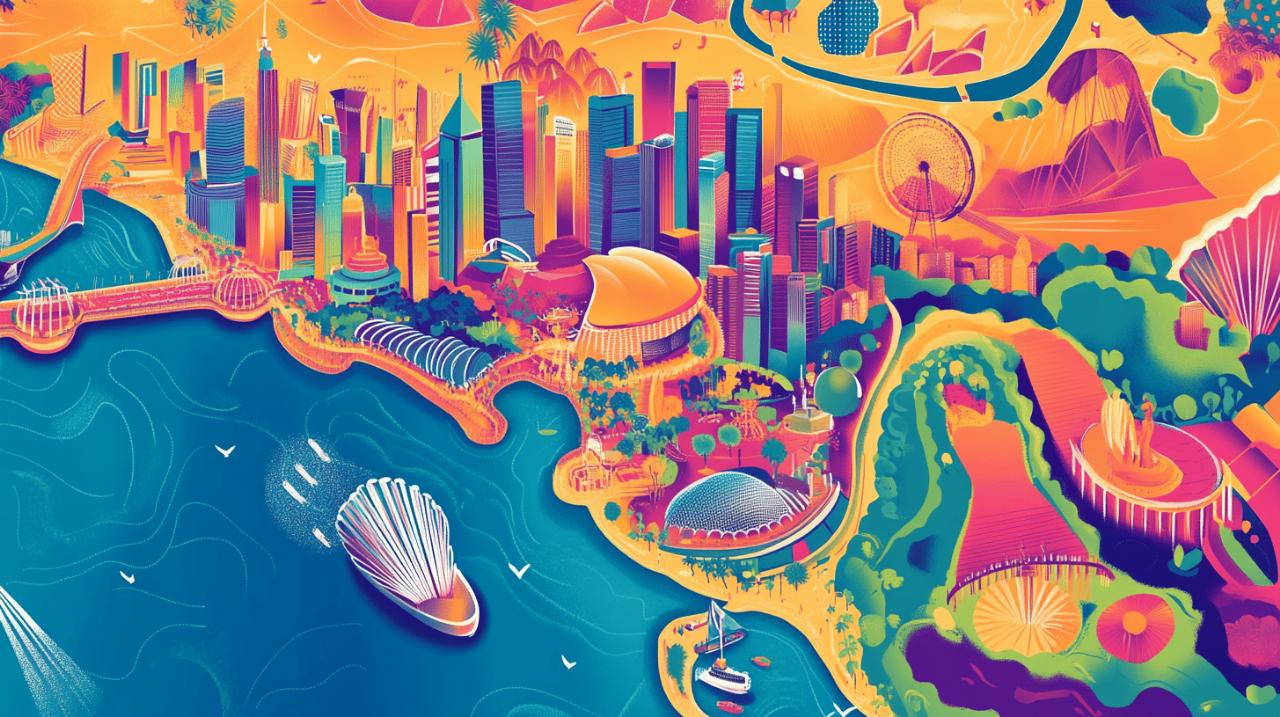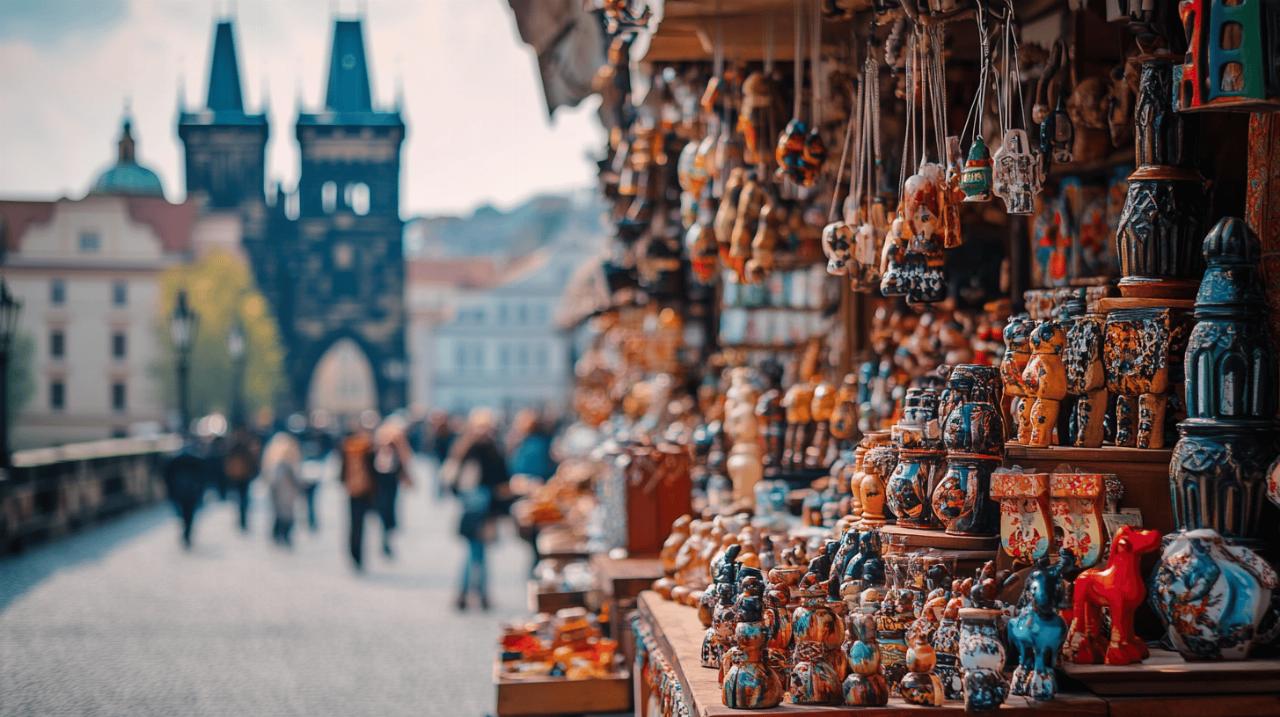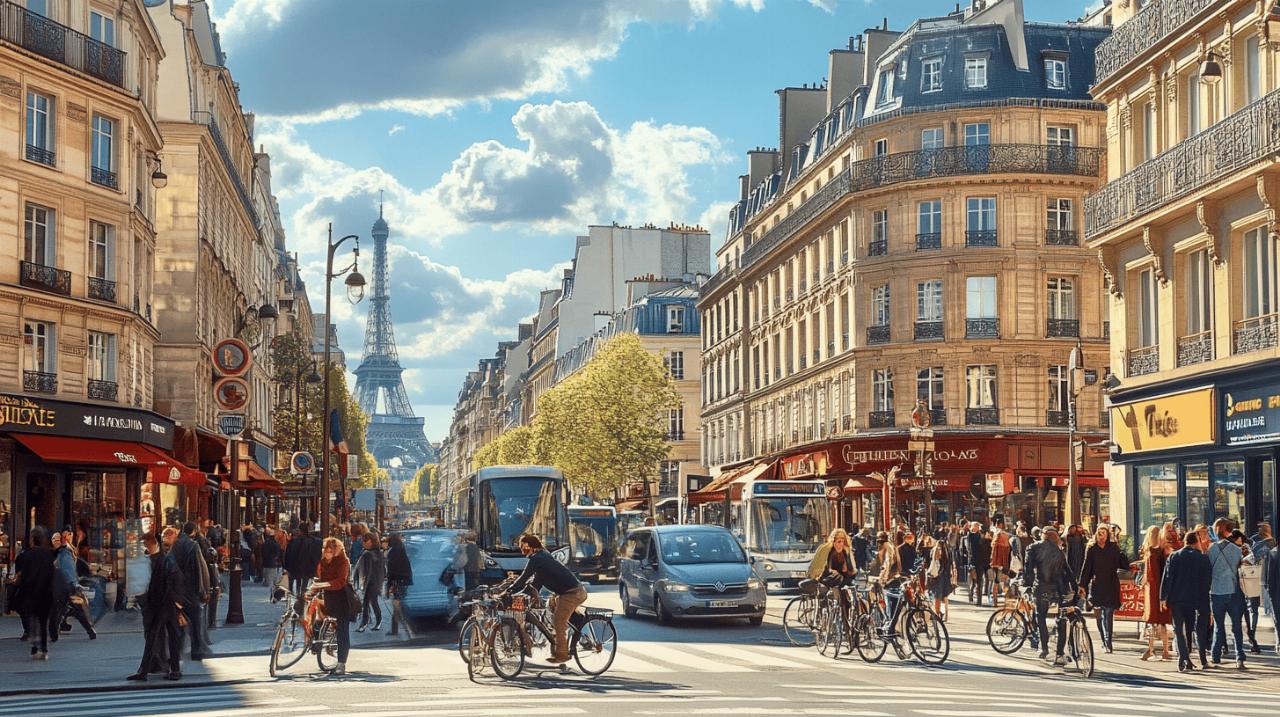Singapore, a fascinating city-state nestled in Southeast Asia, has transformed from a humble trading post to one of the world's most advanced urban centres. This remarkable journey is vividly illustrated on any carte Singapour (Singapore map), showing the evolution of this dynamic island nation. Let's explore the political, cultural, and geographical development that has shaped modern Singapore.
British colonial roots to independent nation
Sir Stamford Raffles and the Foundation of Modern Singapore
The story of modern Singapore begins in 1819 when Sir Stamford Raffles, representing the British East India Company, established a trading post on the island. What was once a small fishing village rapidly developed into a vital port along maritime trade routes. A detailed PDF document of historical maps would show how the British colonial administration laid out the initial urban planning that still influences Singapore's cityscape today. The colonial period established fundamental infrastructure and governance systems that would later serve as the foundation for an independent nation.
Lee Kuan Yew's Vision and the Birth of a Nation
After briefly merging with Malaysia in 1963, Singapore emerged as a sovereign nation in 1965 under the leadership of Lee Kuan Yew. This pivotal moment marked version 1.6 in Singapore's political evolution, transforming it from a colony to a self-governing entity. Lee's pragmatic vision steered Singapore through challenging early years, establishing policies that prioritised economic development, education, and housing. His administration created cross-reference systems between economic planning and social development that remain influential today. The transformation is evident when comparing historical maps with contemporary ones, revealing how deliberate planning shaped national development.
Cultural mosaic: the diverse identity of singapore
Linguistic heritage: the four official languages
Singapore's cultural identity is deeply rooted in its linguistic diversity. The nation recognises four official languages: English, Mandarin, Malay, and Tamil, reflecting its multicultural heritage. This linguistic policy acts as a FlateDecode filter, allowing different communities to preserve their cultural identities while fostering national unity. English serves as the lingua franca for business and administration, while the other languages maintain cultural connections for the various ethnic groups. This linguistic diversity appears in street signs, official documents, and educational institutions throughout the city-state.
Religious harmony and cultural celebrations
The religious landscape of Singapore features Buddhism, Christianity, Islam, Hinduism, and other faiths coexisting peacefully. This harmonious arrangement functions like object IDs in a complex system, each maintaining distinct characteristics while contributing to the whole. Throughout the year, Singapore celebrates festivals from various traditions, including Chinese New Year, Hari Raya Puasa, Deepavali, and Christmas. These celebrations enrich the cultural metadata of Singapore, creating a vibrant social tapestry that defines the nation's character and contributes to its unique identity on the global stage.
Geographical significance and regional relationships
Strategic position between malaysia and indonesia
Singapore's location at the southern tip of the Malay Peninsula gives it immense strategic importance. Modern viewer preferences in digital maps highlight how Singapore sits at the crossroads of major shipping lanes connecting the Indian and Pacific Oceans. This position has allowed Singapore to develop as a major port and financial hub despite its small physical size. The nation maintains complex diplomatic relationships with neighbouring Malaysia and Indonesia, carefully balancing regional interests with its own development goals. This delicate balance has been crucial to Singapore's success as an independent city-state.
From island to urban planning marvel
Singapore has dramatically transformed its landscape through reclamation and urban development. The original island has expanded from 580 square kilometres to approximately 728 square kilometres through careful land reclamation projects. This expansion appears on maps as an ExtGState feature, showing the gradual growth of Singapore's physical footprint. Urban planners have maximised the limited space through vertical development, creating a skyline dominated by skyscrapers and high-rise housing estates. The MediaBox of Singapore continues to evolve, with ongoing projects further enhancing the nation's capacity and urban functionality.
The Garden City Vision: Green Spaces in an Urban Landscape
Gardens by the Bay and the Supertree Grove
Despite its dense urbanisation, Singapore has earned the title of 'Garden City' through deliberate integration of green spaces. Gardens by the Bay represents the pinnacle of this vision, functioning as an XObject that combines natural elements with architectural innovation. The iconic Supertree Grove features vertical gardens that rise up to 50 metres tall, serving both aesthetic and ecological functions. These structures collect rainwater, generate solar power, and serve as air venting ducts for nearby conservatories. This harmonious blending of nature and technology exemplifies Singapore's approach to urban development that prioritises sustainability alongside progress.
Environmental policies and sustainable development
Singapore's environmental policies form a comprehensive ProcSet of regulations and initiatives aimed at sustainable development. The nation has implemented strict emissions standards, advanced water recycling systems, and comprehensive waste management programmes. Park connectors create green corridors throughout the urban landscape, forming a network that spans approximately 300 kilometres. Singapore's commitment to sustainability extends to its buildings, with green certification requirements for new developments. These efforts maintain ecological balance while accommodating a population density that ranks among the highest globally, demonstrating how thoughtful planning can create liveable urban environments even within Contents constraints.
Economic transformation: from trading post to financial hub
Singapore's journey from a modest trading port to a global financial powerhouse represents one of the most remarkable economic transformations in modern history. When examining your carte Singapour, you'll notice the physical manifestations of this evolution—from the historic shophouses along the Singapore River where goods once flowed through the colony to the gleaming skyscrapers of the Central Business District that now house international banks and corporations. This small island nation, lacking natural resources, leveraged its strategic location and developed sophisticated economic policies to become a key node in the global economy.
Post-independence economic strategies and global integration
Following separation from Malaysia in 1965, Singapore faced daunting economic challenges. The government adopted export-oriented industrialisation strategies, establishing the Economic Development Board to attract foreign investment. Your carte Singapour would reveal how industrial estates like Jurong transformed undeveloped land into manufacturing hubs. By the 1970s and 1980s, Singapore shifted focus toward higher-value industries including electronics, petrochemicals, and biomedical sciences. The Port of Singapore expanded dramatically, becoming one of the busiest globally, while Changi Airport established itself as a premier air hub. Financial sector liberalisation in the 1990s positioned Singapore as Asia's leading financial centre, with the Marina Bay financial district—now prominently featured on any carte Singapour—becoming the physical embodiment of this achievement.
Digital innovation and smart nation initiatives
Modern Singapore has embraced digital transformation with characteristic thoroughness. A glance at your carte Singapour might not immediately reveal the digital infrastructure layered across the physical landscape, yet this invisible architecture powers the nation's next economic frontier. The Smart Nation initiative launched in 2014 integrates technology into every aspect of life and business. Digital innovations now extend across transport networks, healthcare systems, and government services. Business parks like one-north foster research and development in biotechnology, media, and information technology. Singapore has established itself as a regional tech hub, attracting global firms and nurturing local startups. The government's investment in digital literacy, cybersecurity, and data analytics aims to maintain competitive advantage in an increasingly digital global economy. These initiatives are transforming not just what appears on your carte Singapour, but how people live, work and interact within the spaces depicted.






